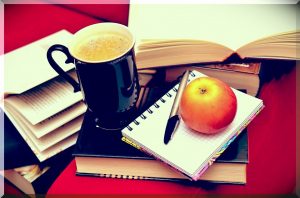When setting up a home, we think living room, kitchen, bathroom and bedrooms. Why not consider adding a “learning room” or “learning spaces” to homes where there are children? Research has shown that parent involvement leads to higher test scores, grades and graduation rates. If the outcome of a child’s education is valued, homes with children should reflect a special set of priorities.

There’s no reason the designated place can’t be aesthetically pleasing. If space is a problem, substitute educational items for knick-knack displays. A wall can host a bookshelf, small bulletin board, chalk board; and if there’s enough space, a world map. A computer is almost a necessity now, but don’t settle for just a computer. Children need to handle real items to help solidify their understanding of the world around them. The following lists assume that a computer is part of the mix.
Materials to Help With Geography and other Social Studies Homework
There are seven social studies categories or “strands” that are covered during the course of a child’s school life: civics and government, economics, geography, historical skills, U.S. history, world history and social science analysis.
Globes and world maps give a big picture view of any topic in social studies. When children have difficulties learning something new, there is probably a piece of information missing. Often it is the big picture or overview. For many children, zooming in on a focus comes more easily after they take in the whole of a topic.
A globe is an overview of all geography topics. You should use these items whenever there is homework in any social studies category. You can also use it for many science topics. Find the area the unit is focused on and observe its relation to bordering countries, states or geographic features. Be sure to also show the relation of your home to the location. (____ is ___ miles from here. It would take us ___ hours to fly there.) This is a good way to move from the overview to a focused view and to add relevance to their homework.
Timelines are great tools for the “overview to focused view” activity also. You can purchase books that are purely timelines of history through the ages, or timelines that are more specific such as only American history, or only the history of a region or group of people. Many history textbooks include timelines for each unit. Use these also. Point out or help your child find the relationship with things that happened before or after the specific event.
A world atlas helps to round out the social studies section of your learning spaces.
These references are just the bare bones of a social studies center. Check the bookstore for some great social studies books to add.
Materials to Help with Science Homework
Observation is a big part of what science is about and the reason you should seriously consider having material to help your child observe. These items can include a microscope, magnifying glass, bug boxes, graph and notebook paper, pencils. For an artistic child or a child who simply loves to draw, consider a sketchbook and an easel; charcoal; colored pencils; or paint. Drawing helps us see things differently and improves our ability to observe.
Consider collecting biographies and autobiographies of scientists and subscribing to science magazines for kids. There are some great books with science activities that can be used during school vacations. They also could help reinforce school lesson plans;
- Magic Science by Jim Wiese
- It’s Not Magic, It’s Science! by Hope Buttitta
- Rocket Science, by Jim Wiese
- Resources to Help with Math Homework
Every home should have math manipulatives and math reference books to help children with homework. Which manipulatives to have on hand depends on the ages of the children. For preschool and primary grades, your learning center should contain at least counters, and an abacus. Cuisenaire Rods are a wonderful manipulative to own if money is short. Simple and complex math concepts can be demonstrated and explored using Cuisenaire Rods; simple addition and subtraction; fractions; decimals; base ten; multiplication and division; and even algebra. There are ten different colored rods, and multiple rods of one color can even be used as counters for preschoolers.
Every math center should include a math journal for each child.
Many parents have a difficult time with math and are fearful they won’t be able to continue helping their child as the math becomes more complicated. The following resources can help parents get up to speed. At the very least, they can be used to help your child catch up with concepts they may have missed during an absence. These books can also be used as reference books whenever there is math homework that seems incomprehensible.
Key To Series (Key to Decimals, Key to Percent, Key to Fractions, Key to Algebra, Key to Geometry, and more) by Key Curriculum Press. These help you take baby math steps. Every increment is included in the thinking process needed for that math concept and skill. They are very affordable too. Four of them have an online component for only $5 extra.
- Math on Call, by Andrew Kaplan
- Math at Hand, by Great Source Education Group
- Algebra to Go: A Mathematics Handbook, Andrew Kaplan and Great Source Education Group
Parent as Life Long Learners
The best and most dynamic item in the learning center is the parent. Becoming a life long learner is probably the best thing a parent can do for a child. Beware, parents’ enthusiasm for anything is contagious. Your child may just begin to ask lots of questions again, and their questions will become more and more difficult to answer. Keep one step ahead of them. Collect reference materials for your home; and take frequent trips to the library.
